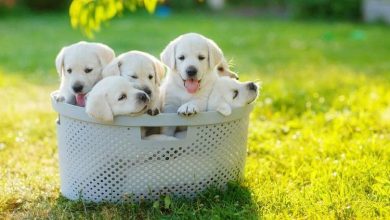Toilet Training for Dogs
Toilet training a dog is an important part of responsible pet ownership. It not only ensures your dog’s hygiene and well-being, but also keeps your home clean and free from unpleasant odors. However, it can be a challenging task, especially if you have a new puppy or an adult dog with bad habits. In this article, we will discuss some tips and tricks to help you toilet train your dog successfully.
Understanding your Dog’s Behavior
Before you start toilet training your dog, it is important to understand their behavior and body language. Dogs have an instinct to eliminate in a specific place and usually, they give signs to indicate their need to go potty. Some common signs include sniffing around, circling, pacing, and whining. By observing your dog’s behavior, you can anticipate their needs and take them to the designated potty area on time.
Designating a Potty Area
The first step in toilet training your dog is to designate a specific area for them to eliminate. This could be a corner of your backyard, a designated spot in a park, or a litter box in your apartment. It is important to choose a spot that is easily accessible, free from distractions, and away from your living areas. Once you have designated the potty area, consistently take your dog to the spot every time they need to go potty.
Using Positive Reinforcement
Positive reinforcement is a powerful tool in toilet training your dog. Every time your dog eliminates in the designated potty area, praise them and give them a treat. This will create a positive association in their mind and they will be more likely to repeat the behavior. On the other hand, avoid punishing or scolding your dog for accidents. This can create fear and anxiety in your dog and delay the toilet training process.
Establishing a Routine
Dogs thrive on routine and consistency. Establishing a daily routine for your dog’s feeding, playtime, and potty breaks can help them understand what is expected of them. For example, take your dog to the potty area first thing in the morning, after meals, after playtime, and before bedtime. This will help them learn when it is time to go potty and reduce the likelihood of accidents.
Using Crate Training
Crate training is a popular method for toilet training puppies and adult dogs. Dogs naturally avoid eliminating in their sleeping area, so by keeping your dog in a crate when you are unable to supervise them, you can prevent accidents and encourage them to hold their bladder. However, it is important to choose the right size crate and gradually introduce your dog to the crate to avoid causing stress or anxiety.
Supervising Your Dog
Supervision is key to successful toilet training. When you are home, keep a close eye on your dog and take them to the designated potty area as soon as you notice signs that they need to go. If you are unable to supervise your dog, confine them to a safe and secure area, such as a playpen or a gated room, with access to the designated potty area.
Cleaning Up Accidents
Accidents are inevitable during the toilet training process. It is important to clean up accidents thoroughly to remove any odor that might attract your dog to eliminate in the same spot. Use an enzymatic cleaner that breaks down the organic compounds in urine or feces and avoid using ammonia-based cleaners that can smell like urine to your dog.
Progress Tracking
Toilet training is a gradual process that requires patience and persistence. Keep track of your dog’s progress by noting down the times when they eliminate in the designated potty area, the times when they have accidents, and any changes in their behavior.



